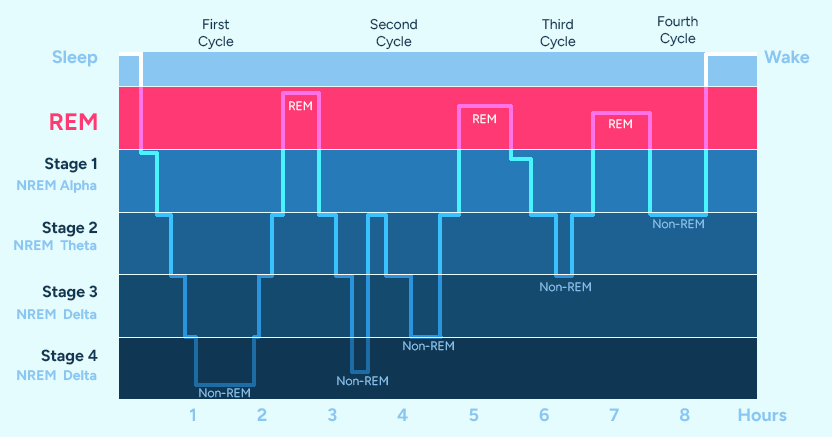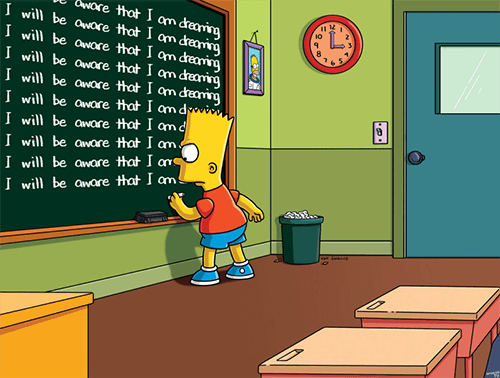
Master the Art of Lucid Dreaming: Tips, Tricks, and Technology
Have you ever wished you could control your dreams? Imagine soaring through the sky or revisiting cherished memories at will. This fascinating phenomenon, known as lucid dreaming, is not just a figment of imagination but a scientifically studied experience. Let's dive into the world of lucid dreaming, its triggers, techniques, benefits, and the latest technologies surrounding it.
What is Lucid Dreaming?
Lucid dreaming occurs when a person becomes aware that they are dreaming while still in the dream state. This awareness allows the dreamer to control and manipulate the dream's content, environment, and even the narrative. But what triggers these vivid experiences?
How to Lucid Dream: Tips and Tricks
Several factors can trigger lucid dreams:
- Dream Journals: Keeping a dream journal helps enhance dream recall and increases the likelihood of becoming lucid.
- Reality Checks: Performing regular reality checks during the day, such as questioning whether you are dreaming, can carry over into your dreams.
- Sleep Patterns: Certain sleep patterns, especially those involving interrupted sleep, can increase the chances of lucid dreaming.
- Practice Meditation: Meditation can enhance your mindfulness and self-awareness, making it easier to recognize when you're dreaming.
Are You Actually Sleeping?
Yes, you are indeed sleeping during a lucid dream. Lucid dreaming typically occurs during the REM (Rapid Eye Movement) phase of sleep, which is when most vivid dreaming happens.

How Rare is Lucid Dreaming?
Lucid dreaming is not extremely rare, but its frequency varies among individuals. Research suggests that about 55% of people experience at least one lucid dream in their lifetime, while around 23% report having them monthly.
Techniques, Benefits, and Cautions
Lucid dreaming can be a powerful tool for personal growth and creativity, but it also comes with its own set of cautions.
- Specifically, people with mental health issues like schizophrenia, psychosis, bipolar disorder, or those in a manic phase, should steer clear of triggering lucid dreams as it could worsen their conditions.
- Having lucid dreams often can mess up normal sleep habits and cause a lack of sleep.
- Lucid dreams can seem like nightmares, sleep paralysis, or even the dreamer's actual reality, leading to feelings of anxiety and confusion.
- If someone has lucid dreams for a long time or very intensely, it might make them too excited, causing more stress and worse sleep.
Popular Techniques to Induce Lucid Dreams
- MILD (Mnemonic Induction of Lucid Dreams): This involves repeating a phrase like "I will be aware that I am dreaming" before falling asleep.

- WBTB (Wake Back to Bed): Wake up after 5-6 hours of sleep, stay awake for a short period, then go back to sleep with the intention of having a lucid dream.
- Reality Testing: Regularly questioning your reality throughout the day.
MILD (Mnemonic Induction of Lucid Dreams): Harnessing the Power of Intention
The Mnemonic Induction of Lucid Dreams (MILD) technique is a popular and effective method for inducing lucid dreams. Developed by Dr. Stephen LaBerge, a pioneer in lucid dreaming research, MILD focuses on using intention and memory aids to trigger lucidity during dreams. Here’s how you can practice MILD:
Step-by-Step Guide to MILD
- Recall Your Dreams: When you wake up from a dream, whether it's in the morning or during the night, try to remember as many details as possible. Keeping a dream journal can be immensely helpful in this process.
- Set Your Intention: As you prepare to fall back asleep, focus on your intention to realize that you are dreaming. You can use a simple affirmation or mantra, such as "I will be aware that I am dreaming" or "Next time I'm dreaming, I will remember that I'm dreaming."
- Visualize Yourself Becoming Lucid: As you repeat your chosen phrase, visualize yourself in a recent dream. Imagine that you recognize it as a dream and become lucid. See yourself taking control of the dream and exploring it with full awareness.
- Maintain Focus: Continue to repeat the phrase and visualize becoming lucid until you drift off to sleep. The goal is to keep your intention active in your mind as you transition into the dream state.
Tips for Success with MILD
- Consistency is Key: Practice MILD regularly, ideally every night, to strengthen the association between your intention and your dreams.
- Combine with Other Techniques: MILD can be used in conjunction with other lucid dreaming techniques, such as WBTB (Wake Back to Bed) and reality checks, to enhance its effectiveness.
- Focus on Recent Dreams: When visualizing, use recent dreams that are fresh in your memory. This makes the visualization more vivid and effective.
- Stay Relaxed: While it’s important to maintain focus, make sure you stay relaxed and don’t stress if you don’t become lucid right away. Patience and persistence are crucial.
- Keep a Dream Journal: Recording your dreams helps improve dream recall and provides material for your MILD practice. It also helps you track your progress over time.
The MILD technique leverages the power of intention and visualization to make lucid dreaming more achievable. By consistently practicing MILD and reinforcing your desire to become lucid in your dreams, you can tap into this fascinating realm with greater frequency and control. Whether you’re a beginner or an experienced lucid dreamer, MILD offers a structured and effective approach to exploring the depths of your dream world.
WBTB (Wake Back to Bed): An Effective Technique for Lucid Dreaming
The Wake Back to Bed (WBTB) technique is one of the most effective methods for inducing lucid dreams. It involves waking up after a period of sleep, staying awake for a short time, and then returning to sleep with the intention of entering a lucid dream. Here’s a detailed guide on how to practice WBTB:
Step-by-Step Guide to WBTB
- Set an Alarm: Before going to bed, set an alarm to wake you up after 5-6 hours of sleep. This period is ideal because it coincides with the REM sleep stage, where dreams are most vivid and memorable.
- Wake Up and Stay Awake: When your alarm goes off, get out of bed and stay awake for 20-60 minutes. Use this time to read about lucid dreaming, meditate, or engage in light activities that keep your mind alert but relaxed.
- Focus Your Intent: As you prepare to go back to sleep, set a clear intention to have a lucid dream. You can repeat a phrase like "I will realize I am dreaming" or visualize yourself becoming aware in a dream.
- Return to Bed: Go back to bed and try to fall asleep. It may help to practice relaxation techniques or listen to calming music to ease the transition back to sleep.
- Maintain Mindfulness: As you drift off, try to maintain a level of awareness and remind yourself of your intention to become lucid in your dream.
Tips for Success with WBTB
- Consistency is Key: Regular practice of WBTB can significantly increase your chances of experiencing lucid dreams. Try to incorporate this technique into your routine a few times a week.
- Combine with Other Techniques: Pair WBTB with other lucid dreaming techniques, such as reality checks and MILD (Mnemonic Induction of Lucid Dreams), to enhance its effectiveness.
- Adjust Wake Time: The optimal time to stay awake can vary from person to person. Experiment with different durations to find what works best for you.
- Stay Relaxed: If you find it difficult to fall back asleep, practice deep breathing or progressive muscle relaxation to help you relax.
- Keep a Dream Journal: Recording your dreams immediately after waking up can improve dream recall and help you identify patterns that lead to lucid dreams.
The WBTB technique leverages the natural cycles of sleep to make lucid dreaming more accessible. By waking up during a REM period and focusing your intention before returning to sleep, you create a fertile ground for achieving lucidity in your dreams. With regular practice and a bit of patience, you can use WBTB to unlock the fascinating world of lucid dreaming.
Reality Testing: Methods and Techniques
Reality testing involves regularly questioning your reality throughout the day to determine whether you are dreaming or awake. This practice increases self-awareness and can help trigger lucid dreams. While many simple techniques exist, such as looking at your hands or checking a digital clock, a more creative approach can be inspired by the movie Inception.

In Inception, characters use personal totems, small objects that behave differently in dreams versus the waking world. For example, Cobb (played by Leonardo DiCaprio) uses a spinning top that never stops spinning in a dream but falls in reality. While this concept is dramatised for Hollywood, it can inspire a personalised reality check method. Here's how you can create your own:
- Select a Small Object: Choose an item you interact with daily, like a coin or a keychain.
- Observe its Behavior: In real life, note its weight, texture, and how it behaves when manipulated.
- Test in Dreams: In your dreams, try to interact with this object. If it behaves differently, it can signal that you are dreaming.
Despite this creative approach, traditional reality checks remain effective and easier to remember:
- Look at Your Hands: In dreams, hands often appear distorted or have the wrong number of fingers.

- Pinch Your Nose: Try to breathe through your pinched nose. In a dream, you will still be able to breathe.
- Check Writing: Look at a piece of text, look away, and then look back. Text often changes in dreams.
Benefits of Lucid Dreaming
Lucid dreaming offers numerous benefits:
- Emotional Healing: Confront and overcome fears or traumas.
- Creativity Boost: Explore creative ideas and solutions.
- Skill Improvement: Practice real-life skills in a safe environment.
Cautions and What Not to Do
While lucid dreaming can be exhilarating, there are some precautions to keep in mind:
- Avoid Overindulgence: Spending too much time in lucid dreams can disrupt your regular sleep patterns and could cause nightmares.

- Stay Grounded: Ensure you can distinguish between dreams and reality to avoid confusion.
New Technologies in Lucid Dreaming
Advancements in technology have made lucid dreaming more accessible:
- Lucid Dreaming Masks: These masks use light and sound cues to help induce lucid dreams.

- Mobile Apps: Apps offer tools such as dream journals and AI-driven dream interpretation to enhance awareness of your lucid dreaming experience.
Scientists Who Pioneered Lucid Dreaming Research
Several scientists have significantly contributed to our understanding of lucid dreaming:
- Stephen LaBerge: A pioneer in lucid dreaming research, LaBerge's work has been instrumental in bringing scientific credibility to the field.
- Keith Hearne: Conducted the first recorded experiment on lucid dreaming in 1975.
- Paul Tholey: Developed techniques for inducing lucid dreams and studied their psychological implications.
"Lucid dreaming is not just a fantasy; it's a gateway to a deeper understanding of our subconscious."
- Stephen LaBerge
Lucid dreaming opens up a world of possibilities, from emotional healing to creative exploration. With the right techniques and tools, anyone can tap into this fascinating realm. Whether you're a seasoned dreamer or a curious novice, the journey into lucid dreaming is one worth taking.


